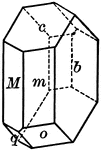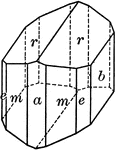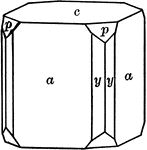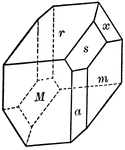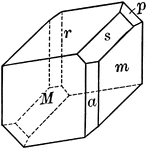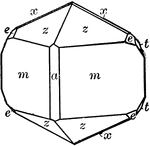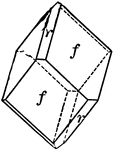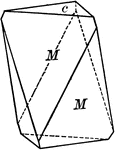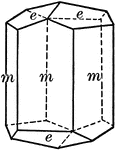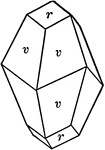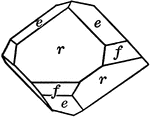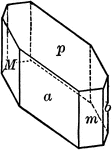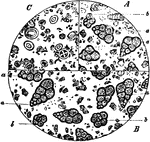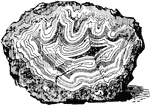
Agate
"A variety of quartz which is peculiar in consisting of bands or layers of various colors blended together."-Whitney,…
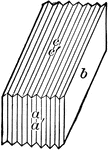
Albite
"Triclinic. Twinning very common, according to the albite law and evidenced by fine striation lines…
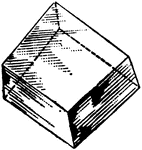
Aluminum
"The mineral corundum which includes the precious stones ruby, sapphire, and topaz, contains alumina,…

Amphibole
"Monoclinic. Crystals prismatic in habit; the prism faces make angles of 55 and 125 degrees with each…
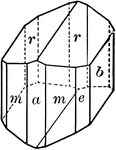
Amphibole
"Monoclinic. Crystals prismatic in habit; the prism faces make angles of 55 and 125 degrees with each…

Apatite
"A complex crystal of apatite with the faces of a third-order pyramid upon it." — Ford, 1912

Apatite
"Hexagonal; tri-pyramidal. Crystals usually long prismatic in habit; sometimes short prismatic or tabular.…

Apatite
"Hexagonal; tri-pyramidal. Crystals usually long prismatic in habit; sometimes short prismatic or tabular.…
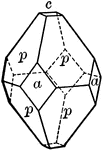
Apophyllite
"Tetragonal. Usually shows a combination of prism of second order, pyramid of first and basal plane."…
Aragonite
"Orthorhombic. Acicular pyramidal; consisting of a prism terminated by a combination of a very steep…

Aragonite
"Orthorhombic. Tabular; consisting of prominent brachypinacoid faces modified by a prism and a low brachydome."…

Arsenopyrite
"Orthohombric. Usually in tabular diamond-shaped crystals, formed by a short prism terminated by low…
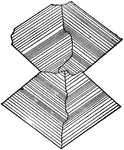
Arsenopyrite
"Orthohombric. Usually in tabular diamond-shaped crystals, formed by a short prism terminated by low…
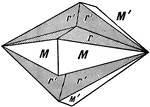
Arsenopyrite
Iron Sulpharsenide (Arsenopyrite), bounded by ∞P, {110} (M), and 1/3P∞̆, {013} (r), forms penetration…

Barite
"Orthohombic. Crystals usually tabular parallel to base; often diamond shaped because of the presence…
Barite
"Orthohombic. Crystals usually tabular parallel to base; often diamond shaped because of the presence…
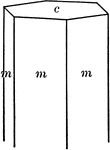
Beryl
"Hexagonal. Strong prismatic habit. Frequently vertically striated and grooved. Forms usually present…
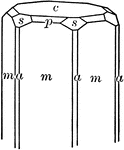
Beryl
"Hexagonal. Strong prismatic habit. Frequently vertically striated and grooved. Forms usually present…
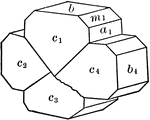
Bournonite
"Orthohombric. Crystals usually short prismatic to tabular. Sometimes quite complex with many prism,…

Calamine
"The only orthorhombic mineral of importance belonging to the hemimorphic class is calamine. When its…

Calamine
"Orthohombic, hemimorphic. Crystals usually tabular parallel to the brachypinacoid. They show prism…
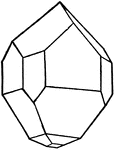
Calamine, Hemimorphite
This figure shows a crystal of basic Zinc Silicate (calamine, hemimorphite) showing hemimorphism.
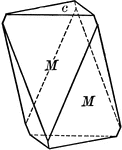
Calcite
"Hexagonal-rhombohedral. Crystals are very varied in habitat, often highly complex. Over 300 different…

Calcite
"Hexagonal-rhombohedral. Crystals are very varied in habitat, often highly complex. Over 300 different…
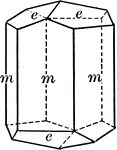
Calcite
"Hexagonal-rhombohedral. Crystals are very varied in habitat, often highly complex. Over 300 different…

Calcite
"Hexagonal-rhombohedral. Crystals are very varied in habitat, often highly complex. Over 300 different…
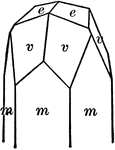
Calcite
"Hexagonal-rhombohedral. Crystals are very varied in habitat, often highly complex. Over 300 different…

Casket
This casket is also known as a jewelry box, it is adorned with malachite (mineral) and precious stones.…

Cassiterite
"Tetragonal. Common forms are prisms and pyramids of first and second orders." — Ford, 1912
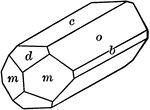
Celestite
"Orthorhombic. Crystals resemble closely those of barite. Commonly tabular parallel to the base or prismatic…

Cerussite
"Habit varied and crystal show many forms. Crystals often tabular parallel to brachypinacoid." —…
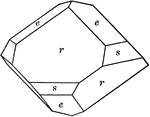
Chabazite
"Hexagonal-rhombohedral. Common form is the simple rhombohedron, r, having nearly cubic angles. May…
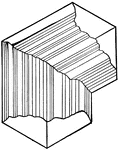
Chalcocite
"Orthorhombic. Usually in small tabular crystals with hexagonal outline. Striated parallel to the brachy-axis.…
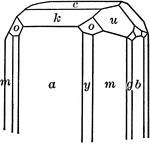
Columbite
"Orthohombic. Habit of crystals is short prismatic; often in square prisms because of prominent development…
